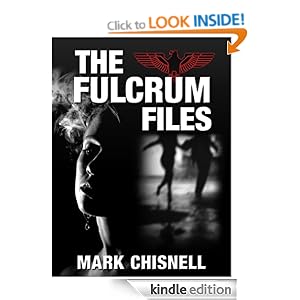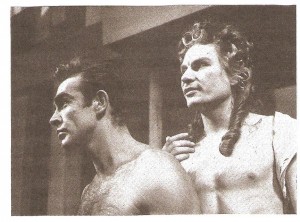Three Spies and a Kindle
Getting to know my Kindle better, I downloaded No 4 on the Spies and Thrillers chart, The Fulcrum Files by Mark Chisnell.

Set in 1936, it’s a story rooted in a period when people were desperate to believe that 1914-18 had seen the war to end all wars, when communism offered an apparently viable alternative way of organising society and the increasingly confident Soviet system was setting up networks to export it. In Britain, manufacturers were almost as reluctant as the government to believe that Germany was re-arming, as Mark Chisnell points out in his PS to this exciting story. It is also a time when pacifism was a vibrant issue and deeply divided friends and families.
Chisnell’s hero, Ben Clayton, is a decent upright human being, a bit of an outsider because his education is above his social class, and even more of a loner because, for profound personal reasons, he is a pacifist. The plot is convincingly riven with class warfare, bully boys and heroism, as our hero tries to investigate an accident with a newly designed mast in which his friend dies. He also tries to look after the widow, be straight with his girl friend (a lovely character) and keep his job. By the time he finds himself on the run in Germany, trying to keep ahead of the Gestapo, I couldn’t put it down. And there is some of the best writing about a chase at sea that I have read since The Riddle of the Sands, a book which our hero has read, marked, learned and inwardly digested. Riveting.

The Riddle of the Sands, published in 1903, is possibly the first spy story. I read a little John Buchan as a child and Fleming as I got older and could take it or leave the genre, frankly, though on the whole I preferred to leave James Bond. I didn’t find The Riddle of the Sands until I was in my twenties and living in Ireland.
Childers was a real child of empire who was converted to the cause of Home Rule and died gallantly for it in front of a firing squad in 1922. (His son was 4th President of Ireland 1973-74, succeeding his father’s friend Eamonn de Valera.) Childers was an enthusiastic sailor and his most famous story tells of a sailing holiday in the Baltic when a young chap from the Foreign Office (the proverbial Carruthers) is invited on a sailing holiday, with perhaps a little duck shooting, by an acquaintance, Arthur Davies. Davies, in fact, suspects that there is a secret German fleet being assembled off the Frisian islands, preparing to invade Britain and is out to prove his theory. Carruthers, the novel’s narrator is at first disconcerted, then flings himself into the venture and they end up sailing for their lives through the fog to warn England. Cracking stuff. Still on my bookshelf.
In an article in The Spectator in 1955 Ian Fleming criticised The Riddle of the Sands for a lack of believable villains. (So Drax, Goldfinger and Dr No are believable, I hear you cry). He also didn’t think it was thrilling enough! But then I’m not sure that Fleming understood suspense, as opposed to sadism, unlike Childers and Chisnell. But then, I’ve only managed to finish two.
James Bond is now identified by the movies rather than the books and, particularly,by the actor. It is said that the various incarnations reflected their times: currently Bond is an impassive hard man, played by Daniel Craig. Brosnan was sophisticated and witty; Timothy Dalton, sophisticated with a hint of a secret sorrow; Roger Moore a sophisticated comedian; George Lazenby not quite sophisticated — and then, first of all, there was Sean Connery. Fleming had envisaged Bond looking like himself (start with the sneer and work backwards, I guess) but he has a character say that Bond reminds her of Hoagy Carmichael. So this is what he wanted:
What he got was Sean Connery.
Serendiptiously, I came across a photograph of Connery as Pentheus in The Bacchae the Oxford Playhouse, in 1959, his pre-Bond days. (Michael David was Dionysos.) The photograph was taken by surrealist painter Oscar Mellor, who day-jobbed as a photographer with, I think you will agree, spectacular results. (A letter entitled You Muddy Fools appeared in the London Review of Books in 2002 on this self-effacing eccentric.)
Pentheus, of course, was torn to pieces by maddened women. For spying.

Interesting post as always, Jenny.
Thanks, Lesley.
Well, I read “Killing Floor” on the basis of your recommendation (thanks – passed an enjoyable evening in Georgia, with a bottle of plonk that needed boiling in) so I’ll willingly give “The Fulcrum Files” a go. I love “The Riddle of the Sands”, but I’ve never managed to find a copy with a really good clear map at the beginning – you do need to follow it closely. Have you ever come across “Drink to Yesterday” by Manning Coles – worth tracking down.
Glad you had fun with Reacher.
Georgia US or Georgia, as in Tbilisi? If latter, I shall commit to memory. Old Russia hands always swore that Georgian wine was delicious but I’ve never tried it.
I’ve vaguely heard of Manning Coles but never read Drink to Yesterday. Wasn’t it lightly disguised autobiography? or was that someone else entirely? If it’s the one I’m thinking of, there may have been a sequel with a similar sort of title. Snort for Tomorrow or something of that ilk. Will chase up, as you say it’s worth it.
Great post as always, Jenny. I read The Riddle of the Sands years ago and it stays with me in ways that Bond never will.
Fascinating post as always, Jenny. So help me, I’d read a telephone book from cover to cover if you wrote it!!
Still have a 6shilling copy of The Riddle of the Sands – complete with excellent map – but never researched the author till a few years ago. Tragic.
Thanks again,
Eileen